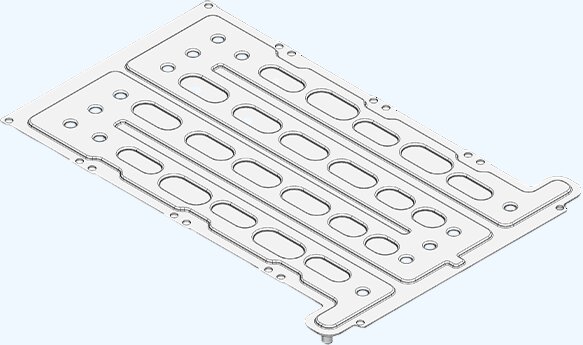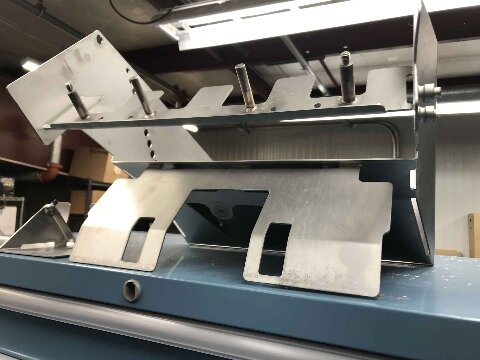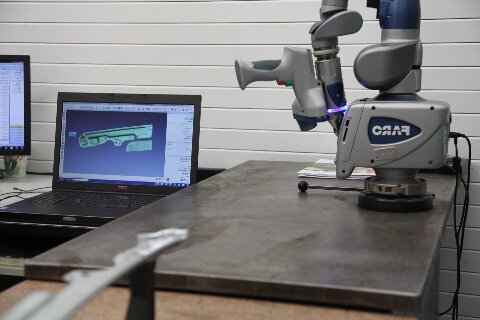Working with brass requires specific techniques to achieve clean, precise holes. Many engineers face frustration with brass drilling – galling, walking drill bits, and poor surface finish can ruin projects and waste materials. What makes drilling brass different from other metals, and how can you get better results?
Brass drilling differs from other metals because of its unique properties. It’s softer than steel but harder than aluminum, requiring different speeds and feeds. The zinc content in brass creates challenges with chip formation and tool sticking. The correct drill bits, speeds, and lubricants will help you avoid common problems and produce clean, accurate holes.
Let’s explore the tools, techniques, and solutions to help you drill brass like a professional, saving you time and preventing costly mistakes.
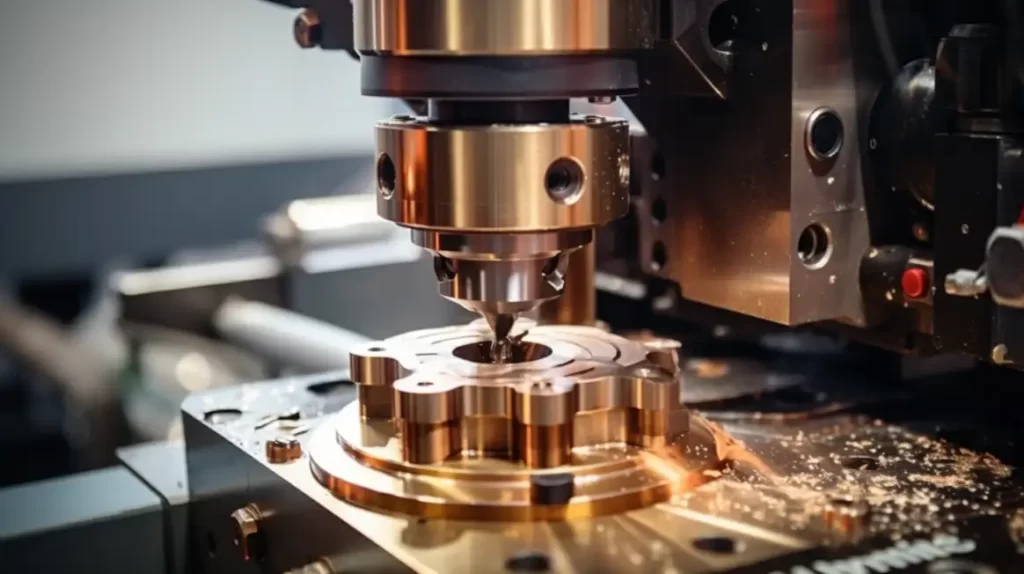
Choosing the Right Drill Bits
Selecting the proper drill bit is the first step to successful brass drilling. The right bit prevents common problems and gives clean results.
High-speed steel vs. carbide drill bits
High-speed steel (HSS) bits work well for most brass applications. They’re affordable, easy to sharpen and provide good results for occasional or light-duty brass work.
Carbide drills are more expensive but more durable. They hold their sharpness longer and are ideal for high-volume drilling.
Many machinists use cobalt-HSS bits (5-8% cobalt content) as a middle option. These offer better heat resistance than standard HSS without the brittleness and cost of solid carbide.
Understanding Drill Bit Geometry
The design of a drill bit affects how it cuts through brass. Here’s what to look for:
Twist rate
The twist rate (helix angle) affects chip evacuation and cutting aggressiveness. A slower twist rate works better for brass – look for “slow spiral” or “low helix” bits. Standard bits have a 30° helix angle, while bits designed for brass often use 15-20° angles.
Point Angle
While standard drill bits have a 118° point angle, a slightly flatter 135° point angle helps prevent grabbing in brass. This blunter point spreads cutting forces over a larger area, reducing the bit’s tendency to dig in suddenly.
Lip Angle
The lip angle determines how aggressively the bit cuts. A neutral or slightly negative rake angle works best for brass, making the bit scrape rather than cut. Many machinists slightly dull the cutting edges of standard bits when working with brass.
Functional Length
Consider the drill bit’s functional length for your specific job. Shorter bits provide more rigidity and accuracy, while longer bits allow access to deeper holes with increased flex and reduced precision.
Excess length increases the risk for brass, which can grab the bit forcefully. To maximize control and precision, use the shortest bit that will reach your desired depth.
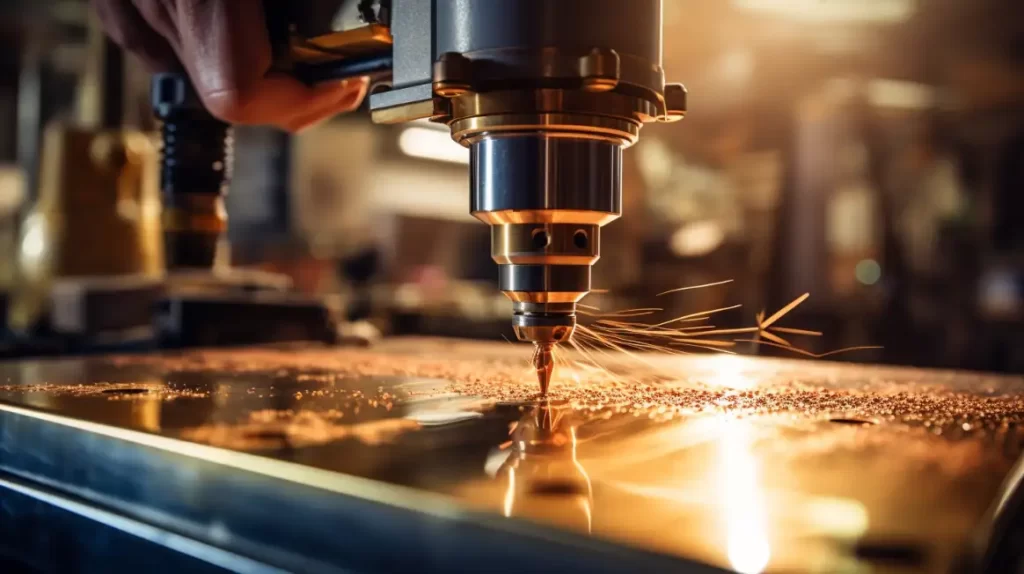
How to Drill Brass?
Drilling brass doesn’t have to be complicated. Follow these steps to ensure clean, precise holes every time.
Step 1: Mark the Drilling Spot
- Use a center punch to create a slight indentation where you want to drill. This prevents the drill bit from wandering when you start.
Step 2: Secure the Workpiece
- Clamp the brass firmly to a stable surface. This prevents movement during drilling, leading to uneven holes or accidents.
Step 3: Set the Drill Speed
- Set your drill to the correct speed for brass. For small holes (up to 1/4 inch), 2,000-3,000 RPM works well. For more significant bits, reduce speed to 1,000-1,500 RPM. Too fast, and you risk melting the material; too slow, and the bit may grab.
Step 4: Start Drilling
- Begin with light pressure and low speed to establish the hole. Once the bit has created a shallow guide hole, increase to normal speed. Apply steady, moderate pressure—let the drill do the work without forcing it.
- Use the “pecking” technique for deeper holes: drill a short distance, then withdraw partially to clear chips, repeating until you reach the desired depth.
Step 5: Use Lubrication
- Apply cutting fluid or lubricant to reduce friction and heat. For brass, tapping fluid or light machine oil works well. Apply directly to the drill bit or the drilling spot. For through-holes, reapply lubricant as needed, especially for deeper holes.
Step 6: Finish the Hole
- Once the hole is complete, clear away any metal chips. Use a deburring tool to smooth the edges and remove any rough spots.
Safety Tips:
- Wear safety goggles to protect your eyes from metal chips.
- Avoid excessive pressure to prevent drill bit breakage.
- Keep hands away from the drilling area.
- Secure the workpiece firmly to prevent spinning.
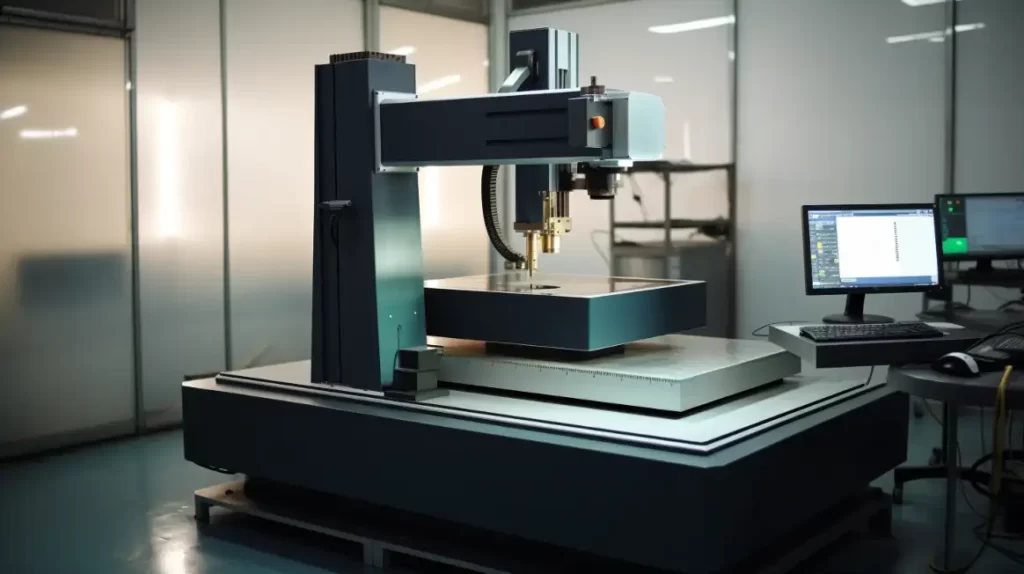
Drilling Techniques for Brass
To drill brass effectively, you must focus on speed, lubrication, and techniques to avoid common problems. Here’s how to get it right.
Proper Speed and Feed Rates
Brass can handle faster speeds than steel, but proper settings are vital. For small drill bits (1/16″ to 1/4″), 2,000-3,000 RPM speeds work well. For medium bits (1/4″ to 1/2″), reduce to 1,200-2,000 RPM. Significant bits (over 1/2″) perform best at 700-1,200 RPM.
Feed rate is equally essential—apply consistent, moderate pressure. Too much pressure makes the bit grab; too little creates friction and heat. Listen to the drilling sound: a steady, gentle cutting noise indicates the proper feed rate. A high-pitched squeal suggests too little pressure, while sudden grabbing means too much.
Coolants and Lubrication
Though brass often can be drilled dry for shallow holes, lubrication improves results significantly for deeper or larger holes. Suitable lubricants for brass include:
- Tapping fluid (most machinists’ first choice)
- Light machine oil
- Specialized brass cutting fluids
- WD-40 in a pinch (for light-duty work)
Apply lubricant directly to the drilling area or dip the drill bit before starting. For multiple or deeper holes, reapply regularly.
Preventing Common Issues
How do you avoid drill bit grabbing and chattering?
Drill bit grabbing happens when the cutting edges dig in too aggressively. Prevent this by:
- Using a drill bit with a slightly dulled edge or modified geometry for brass
- Starting with slow speed and light pressure
- Creating a pilot hole with a more minor bit first
- Grinding a small flat spot on the cutting edges of regular bits
- Using brass-specific bits with reduced rake angles
Chattering (vibration during drilling) causes rough holes and is fixed by:
- Increasing spindle speed
- Using shorter, more rigid drill bits
- Ensuring the workpiece is firmly clamped
- Applying more consistent pressure
Reducing burr formation on drilled holes
Burrs are those annoying rough edges around drilled holes. Minimize them by:
- Using sharp drill bits
- Apply consistent pressure and avoid stopping mid-drill
- Drilling from both sides for through-holes (when possible)
- Using a drill press rather than a hand drill for more control
Remove existing burrs with a deburring tool, countersink bit, or fine file.
Ensuring clean and precise hole finishes
For professional-quality holes:
- Use a center drill or spot drill before the primary drill bit
- Follow drilling with a reamer for exact sizing and smooth walls
- Start with a pilot hole and step up gradually for larger holes
- Keep drill bits sharp and clean
- Use the “pecking” technique for deeper holes to clear chips
Applications of Brass Metal Drilling
Brass is a versatile material used in various industries. Here’s how drilling brass plays a key role in different applications.
Use for Plumbing and Fittings
Brass is widely used in plumbing systems because it resists corrosion and has antimicrobial properties. Plumbers drill brass for pipe fittings, valves, and water distribution manifolds.
Drilling precision matters in plumbing applications because leaks can cause extensive damage. Plumbers often drill and tap brass for threaded connections in custom fittings or repairs.
Manufacturing and Mechanical Applications
Brass is ideal for mechanical components that require low friction and good wear resistance. Manufacturers drill brass for gears, bearings, and bushings used in equipment ranging from clocks to industrial machinery.
Brass is drilled to create terminals, connectors, and switch components in electrical applications because of its excellent conductivity. Automotive manufacturers use drilled brass components in radiators, transmissions, and electrical systems.
Jewelry Making
Jewelry makers drill brass for various purposes in finished pieces and during manufacturing. Brass is often used for costume jewelry, findings (clasps, pins, etc.), and components because of its gold-like appearance and affordability.
Drilling techniques for jewelry applications focus on creating clean, precise holes for stone settings, chain connections, and decorative elements. Jewelers frequently need to drill brass at angles or curved surfaces, requiring specialized techniques and tools.
Conclusion
Drilling brass requires the right tools, techniques, and attention to detail. Use sharp drill bits, control speed, and feed rates, and apply lubrication to achieve clean, precise holes. Avoid using dull bits, drilling too fast, or skipping lubrication.
If you’re looking for high-quality brass components or need expert advice on your next project, we’re here to help. Contact us today to discuss your requirements and get a free quote.
More Resources:
Drill Feeds and Speeds – Source: Norsemandrill
Drill bit – Source: Wikipedia
Hey, I'm Kevin Lee

For the past 10 years, I’ve been immersed in various forms of sheet metal fabrication, sharing cool insights here from my experiences across diverse workshops.
Get in touch

Kevin Lee
I have over ten years of professional experience in sheet metal fabrication, specializing in laser cutting, bending, welding, and surface treatment techniques. As the Technical Director at Shengen, I am committed to solving complex manufacturing challenges and driving innovation and quality in each project.

